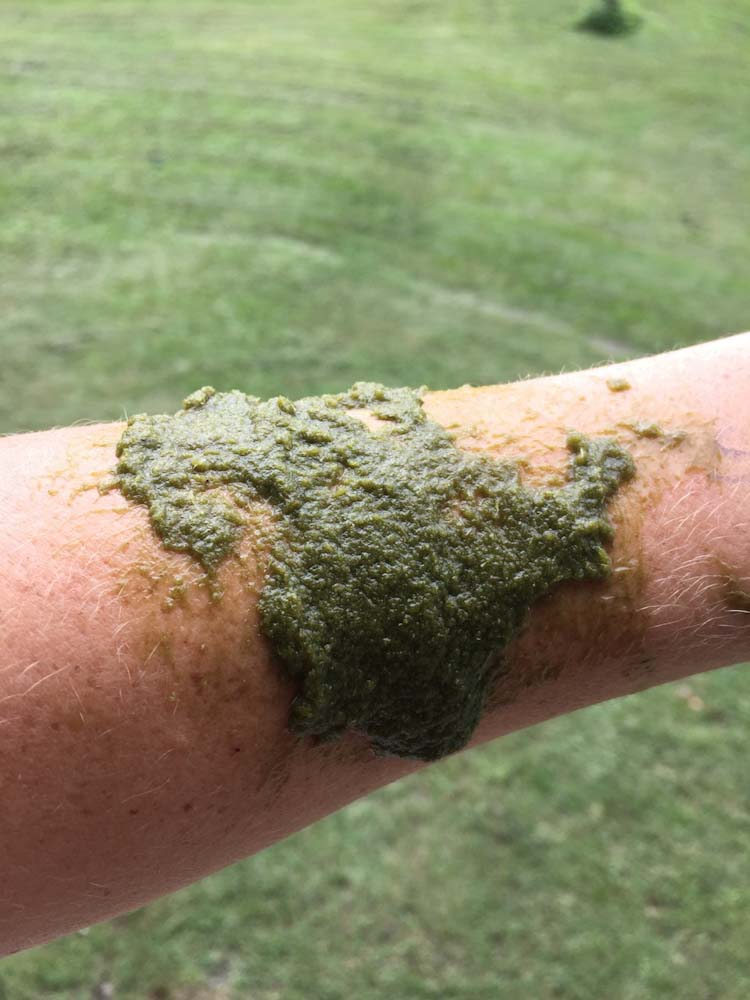A Guest Blog Post by ELLE MEAGER
Marshmallow is part of the Mallow (Malvaceae) family. The name “Malvaceae” means “soft” and “to heal”, which gives you a pretty good clue as to what its benefits are. Marshmallow’s Latin name, Althea officinalis, has important meaning as well. “Althea” comes from “altho”, which means “to cure”.
This herb is an incredibly useful plant to grow in your garden, as it is an anti-inflammatory, antiseptic, and emollient, among other things. It is known as a survival food, due to its hardiness and availability when other crops have died.

How to Grow Marshmallow
Marshmallow is a perennial, so no need to re-sow every year. It grows between 2 and 4 feet tall, with velvety soft leaves. They are deciduous and may die down to ground level in winter, then reshoot in spring.
If you want to propagate some more free Marshmallow plants (and we should all have quite a few in our gardens!), divide the roots up just when it starts to wake up and re-shoot, in early spring. You can propagate from cuttings also, in late spring and summer.
Marshmallow will grow in a wide range of climates (zones three to nine) in anything from sandy soil to very wet soil (as its name “marsh”mallow implies!). It’s salt tolerant for gardens near the sea and can handle a fair amount of drought.

How to Use Marshmallow
We’ll make Marshmallow tea and Marshmallow poultice. The main benefit of Marshmallow, in my opinion, is its soothing action. It will soothe anything! Skin, throats, intestines, urinary tract, any inflammation…
This soothing action comes from its mucilage content, which is 25-35% in the roots and 10-20% in the leaves. It also contains asparagine, which is a powerful natural pain-reliever.

Learn how to Study Edible & Medicinal Plants like a Certified Master Naturalist.
Click HERE for Online Course!
Making Marshmallow Tea
You can make Marshmallow tea as a hot infusion or a cold infusion. Drink this to soothe colds, to battle inflammation, to stimulate your immune system, to wash sore eyes, and soothe skin allergy or insect bites. Rinsing wounds with Marshmallow infusion has an antiseptic and healing effect.
For a hot infusion:
- Take 2 teaspoons of dried herb or 4 teaspoons of finely cut fresh herb.
- Pour 1 cup of boiling water over the top.
- Leave it to steep for up to 10 minutes.
- Slowly sip one to three cups for day.
For a cold infusion:
- Take 2 teaspoons of dried herb or 4 teaspoons of finely cut fresh herb.
- Pour 1 cup of cold water over the top.
- Leave it to steep overnight.
- Warm it slightly before drinking.
- Slowly sip one to three cups per day.

Making a Marshmallow Compress
A Marshmallow compress is one of the most soothing remedies I’ve found for wounds and other skin conditions. It is exceptional at soothing sunburn, bruises, irritation, skin rash, and drawing out boils or inflammation.
- Take 1 cup of dried herb or 2 cups of fresh herb.
- Finely chop it or pulse it in a blender.
- Add a small amount of water, just enough to create a gel.
- Put it directly on the skin and bandage it up, or put the gel on some gauze and apply to the skin before bandaging.
- You can leave this for a few hours or overnight, after which you can re-apply new poultice if needed.


For extra drawing power (like for pimples, boils, etc.) add a small amount of kaolin clay. For extra healing power for the skin, add a small amount of zinc oxide powder (non-nano particles). For extra skin moisturising properties, add a small amount of glycerin.
I always keep frozen cubes of Marshmallow poultice in the freezer, so I can pull one out when the kids have a cut, bruise, insect bite, scrapes… It’s extra soothing when it’s icy cold and very convenient when they’re ready to go in the freezer.

What Else Can We Do With Marshmallow?
Marshmallow is a useful survival food. Grow some and you’ll never run out of food! Eat leaves and flowers raw in a salad. Chew the leaves raw, on their own, for a good amount of vitamin A or to soothe a dry mouth. Add some leaves to soups, pickles, or stews. Eat the young roots steamed or cooked.
And of course, make your own natural marshmallows from the roots! These days, marshmallows are made with gelatine and sugar, but why not bring back the original marshmallow and eat some sweets infused with goodness?
Elle Meager is passionate about turning every backyard into a self-sufficient edible garden and herbal medicine cabinet. She is the founder of Outdoor Happens (https://www.outdoorhappens.com)




![How to Build a Wilderness Survival Shelter [FREE BUSHCRAFT SKILLS: WILDERNESS SURVIVAL SHELTER CHECKLIST]](https://i2.wp.com/willowhavenoutdoor.com/wp-content/uploads/2021/02/frank-main.jpg?resize=150%2C150&ssl=1)






No Comments